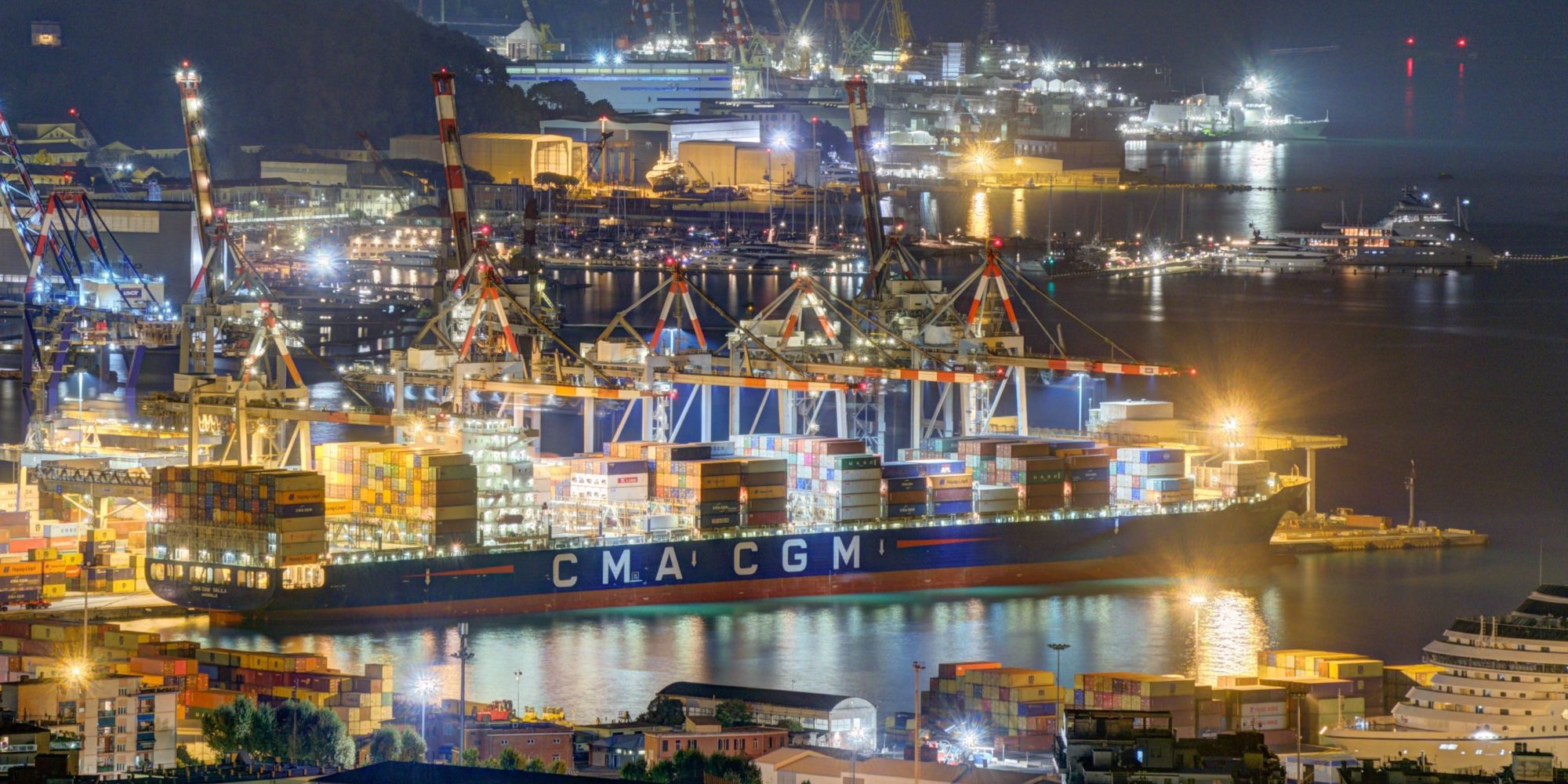Ports and terminals in northern Europe have a consistently high profile in the global transport chain. However, it is often an overlooked fact there have been some major developments across ports and terminals in southern Europe in the past few years.
These developments have in turn thrown up some exciting and viable alternatives for shippers, freight forwarders and cargo owners.
Ten years ago, the average size of a ship sailing in the Med-Asia was around 6,000-7,000 TEUs. Today, the Mediterranean welcomes 14,000-20,000 TEU size ships, thanks to the growing demand in trade between Europe and Asia. With more upsized vessels calling at Mediterranean ports, more ports have geared up to ensure facilities are in place to handle these mega-size vessels, safely and efficiently.
In the Mediterranean, if you look at how far La Spezia has developed in the last 50 years, it has been quite phenomenal. If someone said 20 years ago, a private terminal from nowhere can handle a ULCS, they will say you must be dreaming. However, in 2011 La Spezia Container Terminal (“LSCT”) did just that and became the first port in Italy to handle 14,000 TEU ultra-large containership. Now, the terminal will undergo a series of upgrades to expand and further grow its services offering.
A ULCS allows shippers and lines to reduce cost. However, to accommodate these vessels and to increase ports competitiveness, port infrastructure enhancements are necessary.
In their latest press statement, La Spezia Container Terminal shareholders confirmed the development plan of the terminal. The first phase of LSCT investments aims to add an additional 300,000 TEUs to the current handling capacity and increase the share of rail transport, from the existing 33% to 40% of the modal split.
By the year-end, the new draft at Fornelli East (-15m) and Fornelli West (-14m) are expected to be both officially completed and announced. LSCT’s capability will be able to accommodate more ULCS calls, enabling carriers to plan an average additional volume of at least 300-400 TEUs per call.
Southern Ports will also be digitally transformed to become a Smart Terminals, featuring technological enhancements to improve its performance e.g. enhanced terminal operating systems and port community systems will be available to help manage big data in the terminal, gate automation with mobile app access with QR code, etc.
In October, the Italian Customs and Monopoly Agency officiated the Smart Terminal procedures in Ports of Genoa and La Spezia. With the Smart Terminal, AEOs (“Authorised Economic Operators”) can organize the incoming of goods and related customs declaration in advance and operate in a more efficient and timely manner.
These upgrades are essential as investments in deep sea shipping, smart ports and automation are key for greater operational efficiency. Meanwhile, investments in seamless connectivity to inland rail-networks also play a vital role in improving the Southern Gateway’s competitiveness and service quality.
Although Southern gateways won't have the critical-mass volume most northern European ports enjoy, with numerous ship calls each week by up to 25,000 TEU capacity, La Spezia can comfortably handle three 14,000-18,000 TEU ships a week without any problem. Furthermore, southern ports are not only upgrading their oceanside infrastructure capability, including cranes and deeper draft, but also their connectivity to inland points and beyond.
For example, in addition to its existing La Spezia Container Terminal Fast Corridors, Rail Hub Milano (RHM) has recently introduced the new Genoa-Melzo fast Corridor, allowing customs import procedures to be shifted from the gateway port container terminal to the next inland logistics hub. This shift avoids bottlenecks and reduces port congestion while postponing customs operations.
With the new Fast Corridor, it will now be possible to transfer imported goods from Genoa to Rail Hub Milano without the need to issue T1 transit documents, thereby speeding up the transfer of import containers by up to 24 hours.
For importers using Ligurian ports to route cargoes to and through Milan, they now have more logistics options available when they choose Rail Hub Milano, further cementing Rail Hub Milano’s central role within the Italian and European intermodal system.
Contship Italia’s integrated and reliable port-to-rail network in the Eurozone, in particular its integrated model, provides shippers an opportunity to save on inventory costs and to gain an instant access to almost 50% worth of Italian GDP within 300 km.
It is easy to follow what everyone else is doing; however, in order to do better and avoid becoming commoditized, shippers and freight forwarders should not be afraid of exploring alternatives that are different from everyone else whilst achieving the same results.
Whenever we ask Asian customers how they route a container to Switzerland, they will commonly think of the northern gateway. But if you wish to save cost and stand out from the competition, you have to shift your perspective and look at other suitable alternatives.
For example, La Spezia port can offer freight forwarders a better transit-time and reduced fuel consumption. In particular, following the completion of the Gotthard tunnel, Hannibal (the Multimodal Transport Operator of Contship) trains will be able to operate with more wagons and heavier payloads through the Alps to Switzerland and beyond, within a much shorter transit-time, at the most competitive cost.
Contship works closely with all customers, who are looking to offer an innovative product to their clients. It takes time to change, but it is important to first start by evaluating the routes. La Spezia offers great opportunities for freight forwarders as well as BCOs (Beneficial Cargo Owners) who are looking for viable, alternative options for a part of their consignments. It allows them to better manage the risk in case of disruption and improve the stability and integrity of their supply chain. We see this happen more and more, for example low water levels on the Rhine and Elbe rivers, congestions, Brexit knock on effect etc. If you are moving 100 containers to Switzerland every month, it is really worth considering transporting say, 25% via the Southern Gateway. This allows you to manage and avoid any potential disruption, ensuring continual movement of your cargo.


 Daniele Testi is Contship Italia Head of Key Account Management and Marketing and President of SOS LOGistica, the Italian association for sustainable logistics.
Daniele Testi is Contship Italia Head of Key Account Management and Marketing and President of SOS LOGistica, the Italian association for sustainable logistics.
